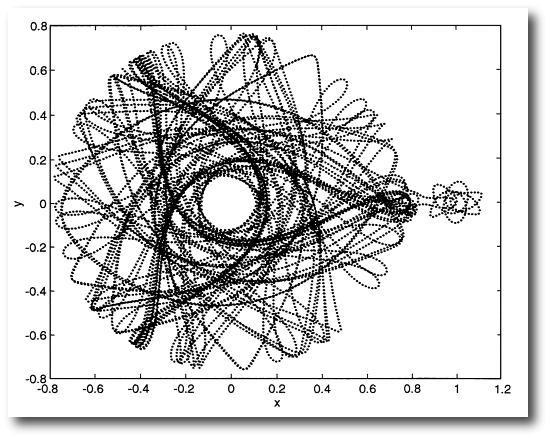Kraftwerk will be playing eight shows in April at the MOMA, but all eight sold out well before I even found out about it. Getting clued in at this late date is a bit like finding out about a new hot Jupiter orbiting a 14th magnitude star — given that its already March 2012, it’s marginally (or not even) publishable on its own.
The ability to make good predictions prevents one from being perennially late to the game. A good prediction is one that has both accuracy and utility, and for the past two decades, the field of extrasolar planets has been sorely lacking in predictions that make good on either virtue. Yet it didn’t have to be that way! Like many others, in the early 1990s, I was perfectly well aware of Goldreich and Tremaine’s 1980 paper which lays out the essential principles of disk migration.
Even if one only read the abstract, it was very clear that the prospect of Jupiter-like planets on short-period orbits was well worth exploring further. Another example is provided by the Kozai mechanism, that relatively straightforward phenomenon first described in the early 1960s that derives directly from the physics and assumptions underlying the circular restricted three-body problem. With simple models for tidal dissipation thrown in, it could have been clear long ago that visual binary stars have the ability to produce Jupiter-like planets with orbital periods of order a week.


Admittedly, to hear such grousing and second-guessing is like sitting next to a losing bettor on the train back from the track. The productive approach is to keep an eye open to all the equally starting predictions that are yet to be made and which can potentially lead to substantial future profits.
With that lead-in in mind, its very interesting to read the recent abstract of Perets, Kratter and Kenyon (which, I’m told, will soon be followed-up by a substantial paper). Perets and collaborators run up the score with a basic point that definitely falls in the should have thought of that myself category: Mass loss in binary evolution alters the zero-velocity surfaces available to a planet that starts life stably in orbit about one member of a binary pair. As the system experiences stellar evolution, with one or both stars losing substantial mass to red giant winds, a planet is able to radically alter its trajectory, and indeed, can wind up orbiting the opposite member of the pair. Tidal friction can then be invoked to elicit a permanent capture.
There’s a cool paper by Elbert E.N Macau from 2000 which draws on a similar idea to put a spacecraft on a low-cost slow-boat trajectory to the Moon. In this case, the impetus is provided by a weak rocket rather than mass loss, but the principle is similar:

Figure 4 from Macau, E. E. N. Acta Astronautica 47, 12, 871-878: Starting from a circular parking orbit around the Earth, a thrust is applied to inject the spacecraft into a chaotic region. The spacecraft is then left to move freely in the chaotic region. The uncontrolled trajectory can eventually reach the Moon. In this example, it takes approximately 8 years to reach the vicinity of the Moon. However, after that, the spacecraft quickly leaves the Moon.
Perhaps the most interesting aspect of planetary orbital transfer in evolving binary systems is that it provides a plausible mechanism for delivering Earth-sized worlds to long-lived potentially habitable orbits in the vicinity of white dwarfs. As described in this post from last July, such worlds, when they transit, can be detected from the backyard…


